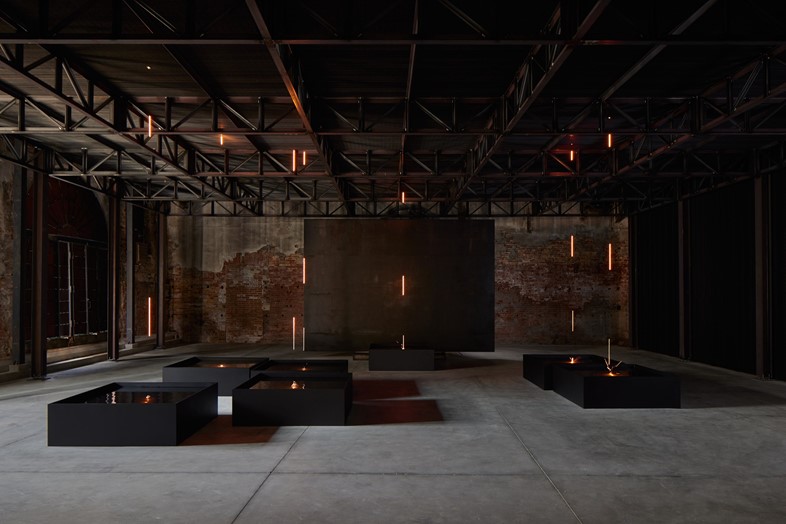This year’s Malta Pavilion is about “deceit, media malpractice and the weaponisation of ideas,” says curator Keith Sciberras
In Caravaggio’s 1608 painting The Beheading of Saint John the Baptist, an executioner holds down the head of the prophet while a servant girl stands with a golden platter to receive his head. It’s widely believed that John the Baptist was killed for political reasons, and Caravaggio – inspired by his own experiences in a Maltese prison – created the altarpiece to appease the Knights of Malta. Addressing themes of inequality and peace, the altarpiece is widely considered to be Caravaggio’s masterpiece, as well as one of the most important works in the western canon – it’s also the inspiration behind this year’s Malta Pavilion at the Venice Biennale.
Reimagining the work for a contemporary audience, Diplomazija astuta (‘cunning diplomacy’) is an immense sculptural installation of equally biblical proportions, which transplants the themes apparent in Caravaggio’s original work into a modern context. A collaboration between Italian artist Arcangelo Sassolino and Maltese brothers Giuseppe Schembri Bonaci and Brian Schembri, visitors enter a pitch-dark room punctuated by flaming streaks of steel that fall from the ceiling. It’s a profound experience; the transfiguration of steel into fire takes on a purifying quality – each droplet evoking the idea that the world, and our existence, is transmutable.
The artwork is made up of a large metal armature that conceals a computer-programmed system, which feeds steel coils into the induction machine. Molten steel droplets fall from a structure overhead into seven basins of water, each representing a subject in The Beheading, while an accompanying score follows the rhythm of a Gregorian hymn created in honour of John the Baptist. It dictates the timing and frequency of each descending ember as it hisses, cools and recedes into darkness.

Beyond the obviously impressive engineering – the system’s electromagnetic field melts the metal almost instantaneously at 1,500 degrees Celsius – what’s perhaps most striking about the artwork is its creative reimagining of the source material. “The molten steel embodies ‘living’ time, expanding and radiating light at exceedingly high temperatures until the light is reclaimed by darkness. Diplomazija astuta allegorises the continuous cycle of agency and loss, the impossible and unstoppable flow of events – symbolised by evanescent intervals in which light is carved out of darkness,” explains the curator, Keith Sciberras.
By reimagining the centuries-old work for the present, the work aims to spotlight injustices in the world today, from displacement in Ukraine and Palestine to corrupt media narratives and wealth inequality. Or, as Sciberras puts it, “[The] biblical tragedy resonates with current world events, revealing the blind spots and failures of the humanist project across millennia: deceit, media malpractice and the weaponisation of ideas.”
